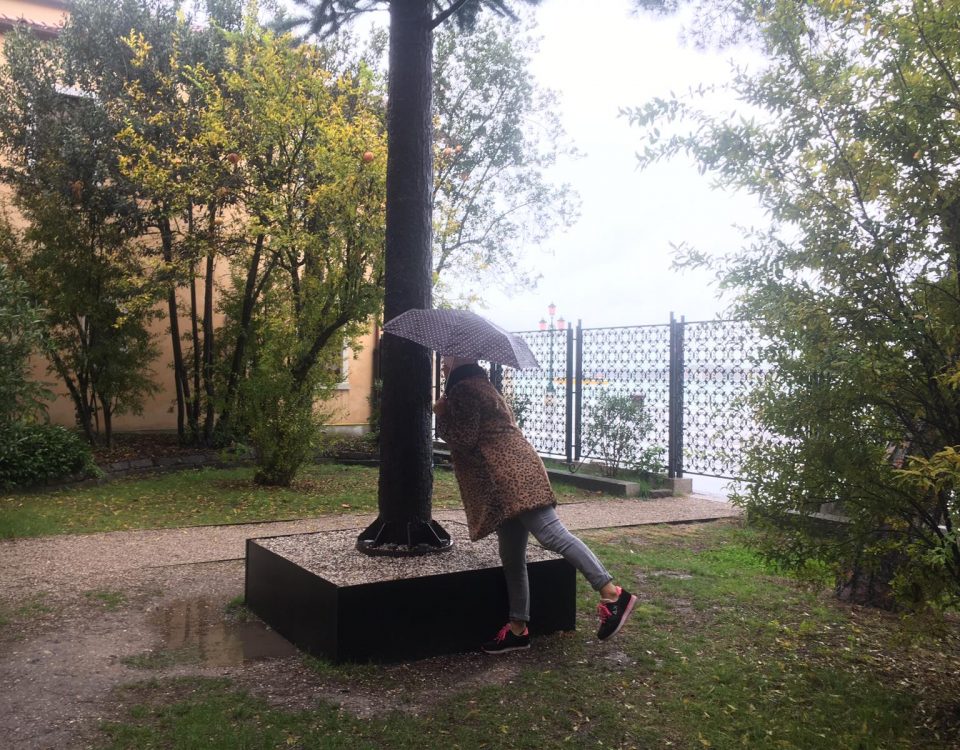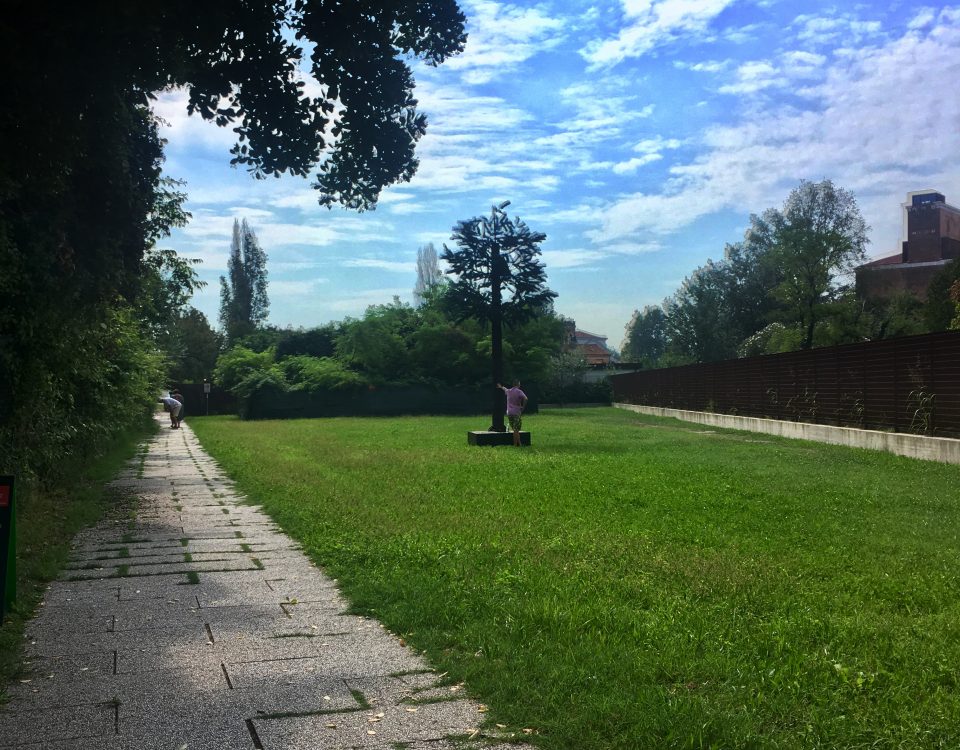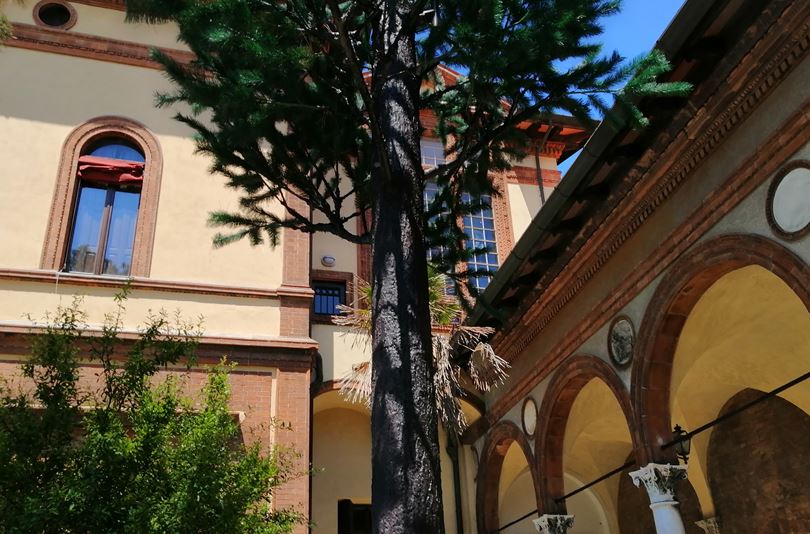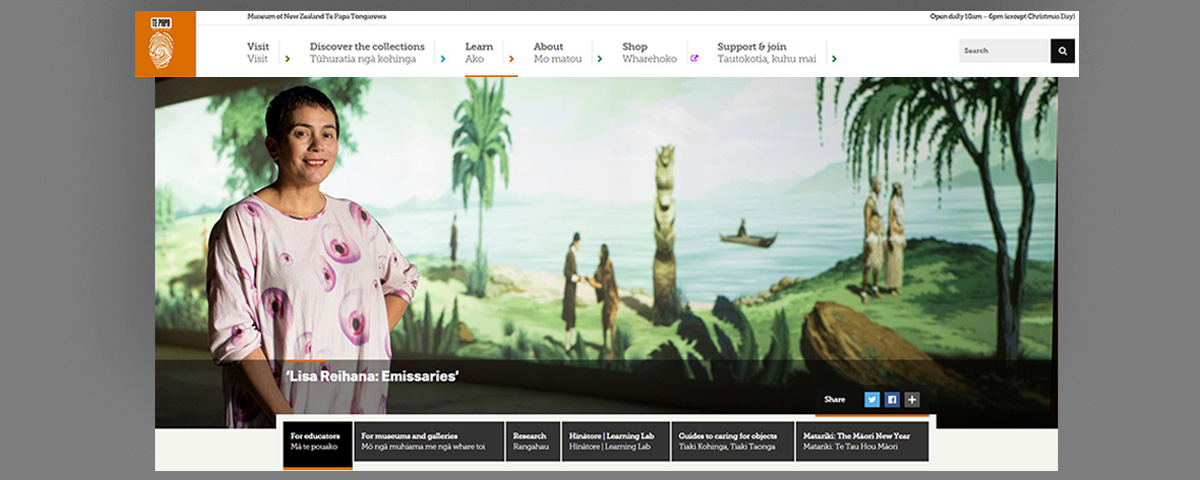
Kiwi learners to explore New Zealand artwork at the Venice Biennale through digital resource
June 16, 2017
Call for proposals: NZ at Venice 2019
July 4, 2017Reflecting on six weeks in Venice: My Q & A with Lisa Reihana
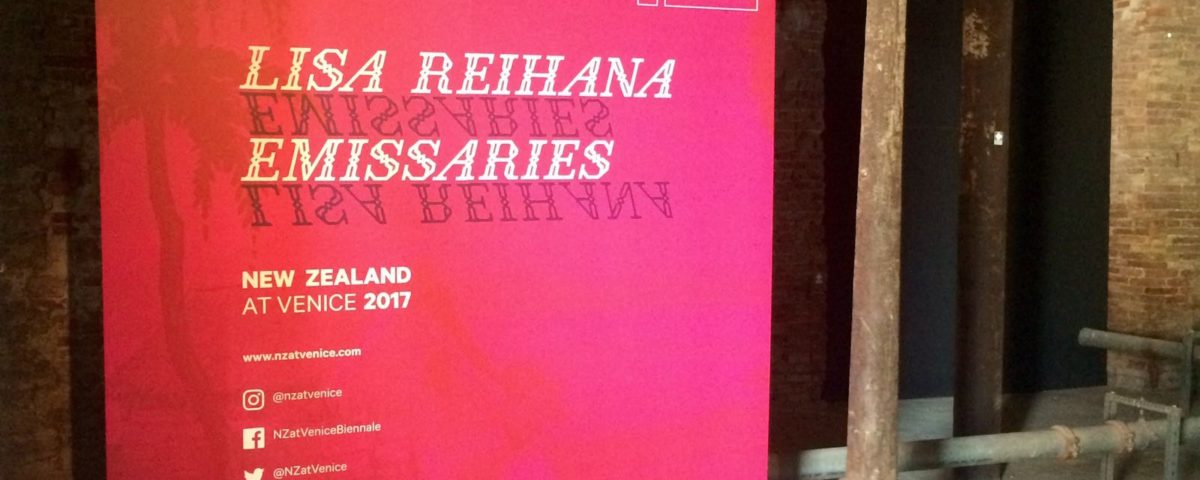
'Lisa Reihana: Emissaries' signage inside NZ Pavilion. Photo by Talei Si’ilata
Talei Si’ilata is one of the Exhibition Attendants for Lisa Reihana: Emissaries. Our attendants each spend approximately six weeks in Venice between May and November 2017. Talei blogs (below) about her reflections of her time in the New Zealand Pavilion through a Q & A with Lisa Reihana.
For my final blog I thought I would take the opportunity to reflect on my six weeks in Venice by asking artist Lisa Reihana a few short questions about her personal experience with the Lisa Reihana: Emissaries exhibition and the culmination of its journey to the Biennale Arte 2017.
Talei: How do you feel now that in Pursuit of Venus [infected] has finally made its debut in Venice and the task is (in a sense) completed?
Lisa: It’s a wonderful and strange place to be. It’s been fantastic to watch other people view Emissaries and become immersed in it. I’m also really happy for the cast and crew, the people who are in it and who have worked on it. I feel a little ambivalent as well, because it’s as though the work doesn’t belong to me anymore. What people see is just a fraction of this project because it has taken so long to make. When I look at Emissaries now, I see the people who have been part of the work, and I also think about those who have passed away.
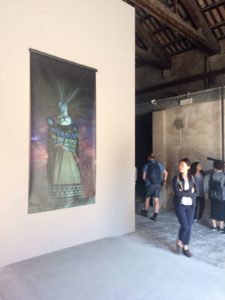
Visitor looking out for the Chief Mourner. Photo by Talei Si’ilata
Talei: You’ve received amazing response for the Lisa Reihana: Emissaries exhibition, in particular for in Pursuit of Venus [infected], 2015–17. Why do you think so many people have connected with the work?
Lisa: Aesthetically, it’s an open invitation. People are used to screen culture and that appeals to children and older people alike. I think the exotic aspect of the work appeals to some. People are also drawn in by the historical and illustrative qualities of the work…it’s like a painting; it’s easy on the eyes and it has an innate beauty that people want to stay to unpick. And when they do, they become immersed in its layers. The soundtrack is extremely enticing and makes the entire work that much more cohesive.
Talei: I’ve heard people say that the work is an appropriate piece for our time. Would you agree with this statement?
Lisa: Well I can only make a work of my time, and this work could only have been produced at this particular point in my life. I have used all of the skills accrued over the course of my career to do so. In some ways the work is a product of New Zealand’s bi-cultural policies I encountered while I was at art school in the 1980s and 1990s. A sense of humanity is what people respond to in the work. I believe good work transcends it’s time. Straddling super contemporary techniques, looking at the past, and made by people of now.

